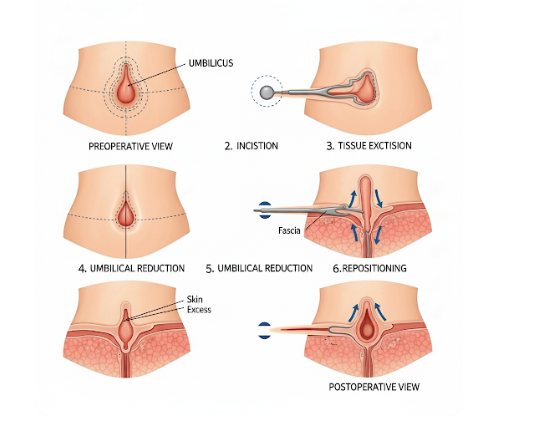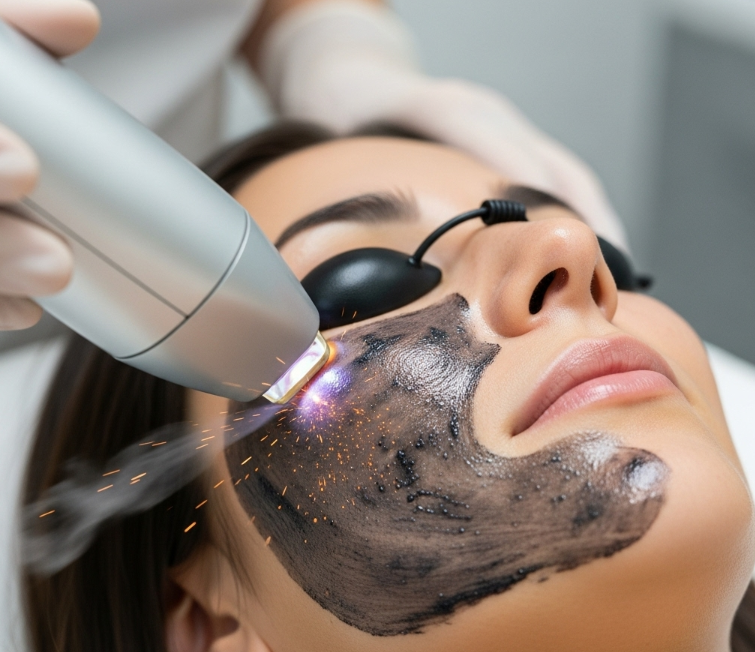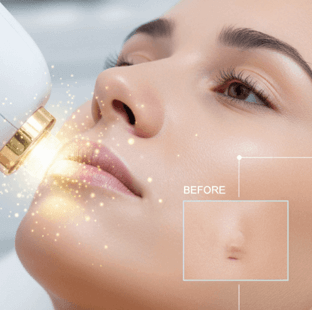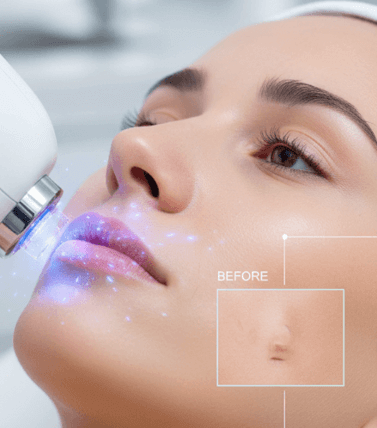Treatment Overview
Reduction Umbilicoplasty is a cosmetic procedure designed to reduce the size of a large or stretched belly button, creating a smaller, more proportionate and natural-looking navel. Many patients seek this surgery because their belly button appears too wide, too deep, or stretched due to genetics, pregnancy, weight changes, or past surgeries. This procedure reshapes the navel by removing excess skin and tightening the surrounding tissue while keeping scars discreetly hidden.
In Korea, surgeons are internationally recognized for their precision in aesthetic body contouring and scar-minimizing techniques. They often combine reduction umbilicoplasty with other abdominal procedures such as liposuction, tummy tuck, or scar revision for comprehensive results. Korean clinics also offer advanced aftercare programs to ensure fast healing and long-lasting natural outcomes.
Purpose & Benefits
- Belly Button Size Reduction: Creates a smaller, more balanced navel.
- Youthful Aesthetic: Corrects stretched or sagging navels caused by pregnancy or weight loss.
- Scar-Minimizing Surgery: Incisions hidden inside or along the natural contour of the belly button.
- Body Proportion Enhancement: Improves the abdominal appearance for a smoother silhouette.
- Confidence Boost: Enhances self-image in swimwear, crop tops, and fitted clothing.
Ideal Candidates
- Men and women with large, wide, or stretched belly buttons.
- Individuals affected by pregnancy, aging, or weight fluctuations.
- Patients unhappy with the size of their belly button after previous abdominal surgery.
- Adults in good overall health with realistic expectations.
- Non-smokers or those willing to quit before and after surgery.
Possible Risks & Complications
- Temporary swelling, bruising, or soreness.
- Mild redness or tightness around the incision.
- Rare risk of asymmetry or uneven contour.
- Possible scar visibility (usually hidden inside the navel).
- Very rare: infection, hematoma, or delayed healing.
Techniques Used
- Hidden Incisions: Placed discreetly inside or at the edge of the belly button.
- Excess Tissue Removal: Reduces stretched or enlarged skin around the navel.
- Umbilical Reshaping: Creates a rounder, smaller, inward-facing belly button.
- Fine Suturing: Ensures natural contour and scar minimization.
- Combination Options: Can be paired with abdominoplasty, mini tummy tuck, or liposuction for enhanced abdominal aesthetics.
Recovery & Aftercare
- 1–3 days: Mild swelling, redness, or tenderness.
- 3–5 days: Resume light daily activities and desk work.
- 1–2 weeks: Dissolvable stitches heal, or external sutures may be removed.
- 2–4 weeks: Resume light exercise (avoid abdominal strain).
Aftercare Guidelines:
- Keep incision area clean and dry.
- Avoid heavy lifting or strenuous workouts for 2–3 weeks.
- Protect scars from direct sunlight to prevent darkening.
- Use recommended scar-care treatments (silicone gel, sheets, or laser if needed).
- Attend follow-up visits to check healing progress.
Results & Longevity
- Smaller, proportionate belly button that looks natural and discreet.
- Minimal or hidden scars after full healing.
- Long-lasting results, especially with stable body weight.
- Enhanced abdominal aesthetics and confidence in midriff-revealing outfits.
Treatment Process in Korea
1. Consultation & Planning
- Surgeon examines belly button size, skin quality, and abdominal contour.
- Customized reduction plan created, often with 3D imaging previews.
2. Surgery Day
- Typically performed under local anesthesia with sedation (general if combined with tummy tuck).
- Hidden incisions made inside or around the navel.
- Excess tissue removed; belly button reshaped and reduced.
- Fine sutures applied to ensure symmetry and natural proportions.
3. Post-Operative Monitoring
- Same-day discharge in most cases.
- Dressing applied to protect the navel during healing.
4. Follow-Up & Refinement
- Follow-ups at 1 week, 1 month, and 3–6 months.
- Scar-care or refinement offered if needed.
Why Korea is a Top Destination
- Surgeons skilled in delicate, scar-minimizing umbilicoplasty techniques.
- Combination treatments with tummy tuck or liposuction available for full abdominal contouring.
- Use of advanced aftercare programs for scar refinement (laser, RF therapy, silicone patches).
- More affordable pricing compared to Western countries while maintaining world-class standards.
- International-friendly clinics in Seoul with multilingual staff and discreet services.
Cost Range
The cost of Reduction Umbilicoplasty in Korea depends on the complexity of reshaping, whether it’s a standalone procedure or part of a combination surgery, and clinic reputation.
Estimated Pricing:
- Standalone Reduction Umbilicoplasty: USD $1,500 – $3,000
- Reduction + Scar Revision: USD $2,000 – $3,500
- Reduction + Mini Tummy Tuck or Liposuction: USD $3,500 – $6,000
- Premium Clinics (3D imaging + scar-care + VIP aftercare): USD $4,000 – $7,000
Additional Costs:
- Consultation & imaging: USD $50 – $150
- Medications & aftercare: USD $100 – $200
- Optional scar-care treatments: USD $200 – $500
Popular Clinics
- Banobagi Plastic Surgery (Seoul): Specialists in proportionate belly button reshaping.
- ID Hospital (Seoul): Known for combining umbilicoplasty with abdominoplasty.
- JK Plastic Surgery Center (Seoul): JCI-accredited, premium abdominal contouring services.
- View Plastic Surgery Clinic (Seoul): Experts in scar refinement and natural belly button aesthetics.
- JW Plastic Surgery (Seoul): Leaders in reduction umbilicoplasty with balanced, discreet results.




